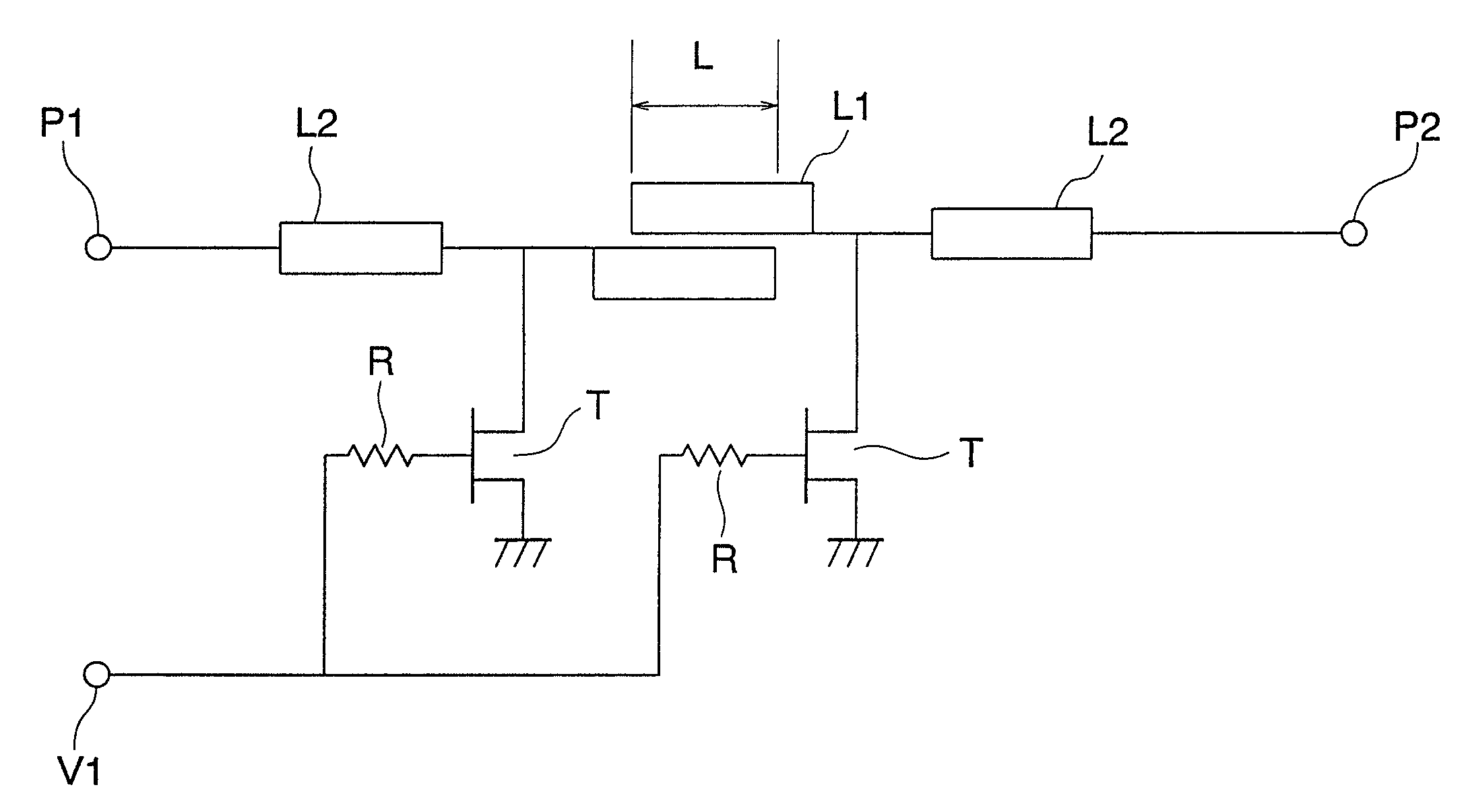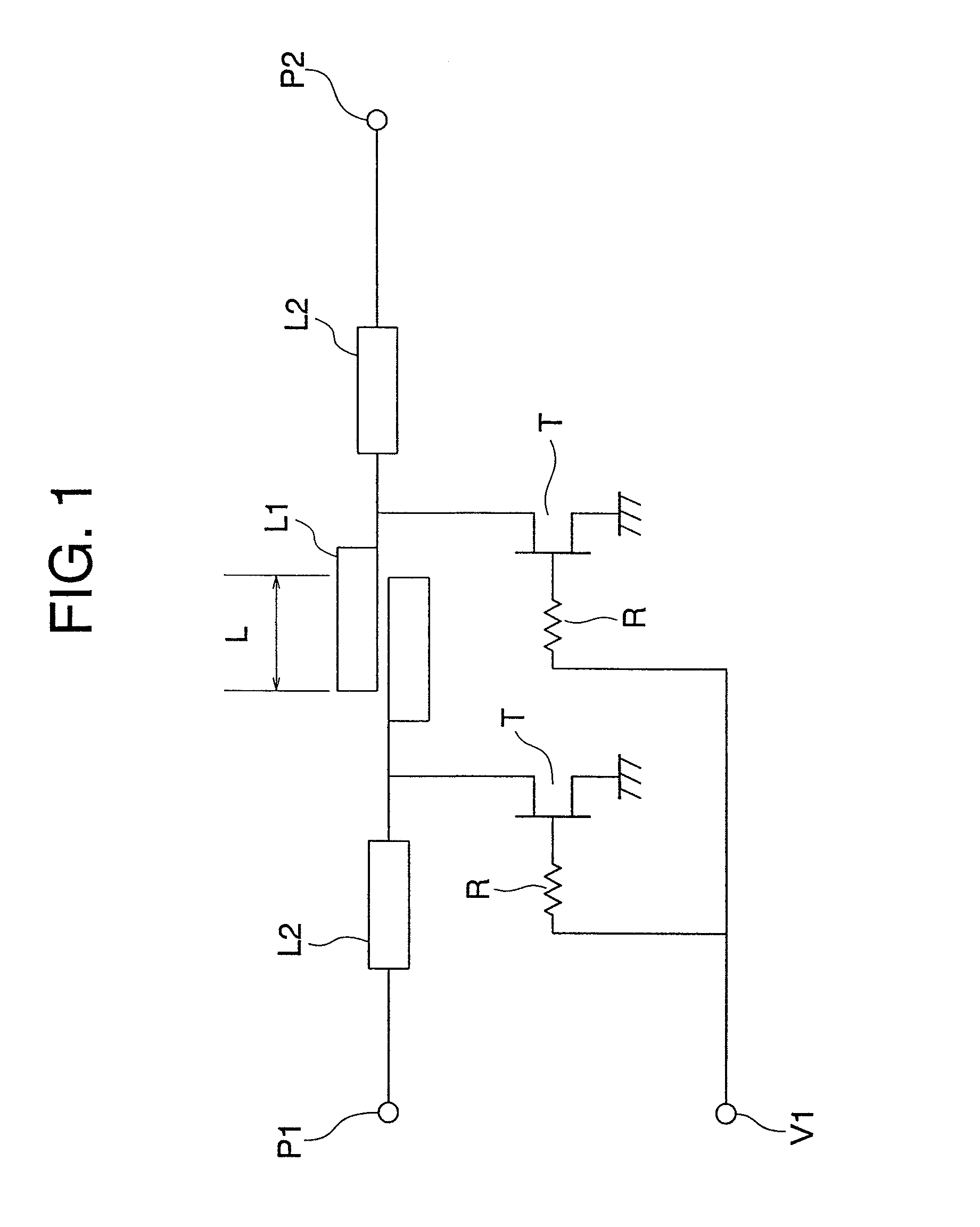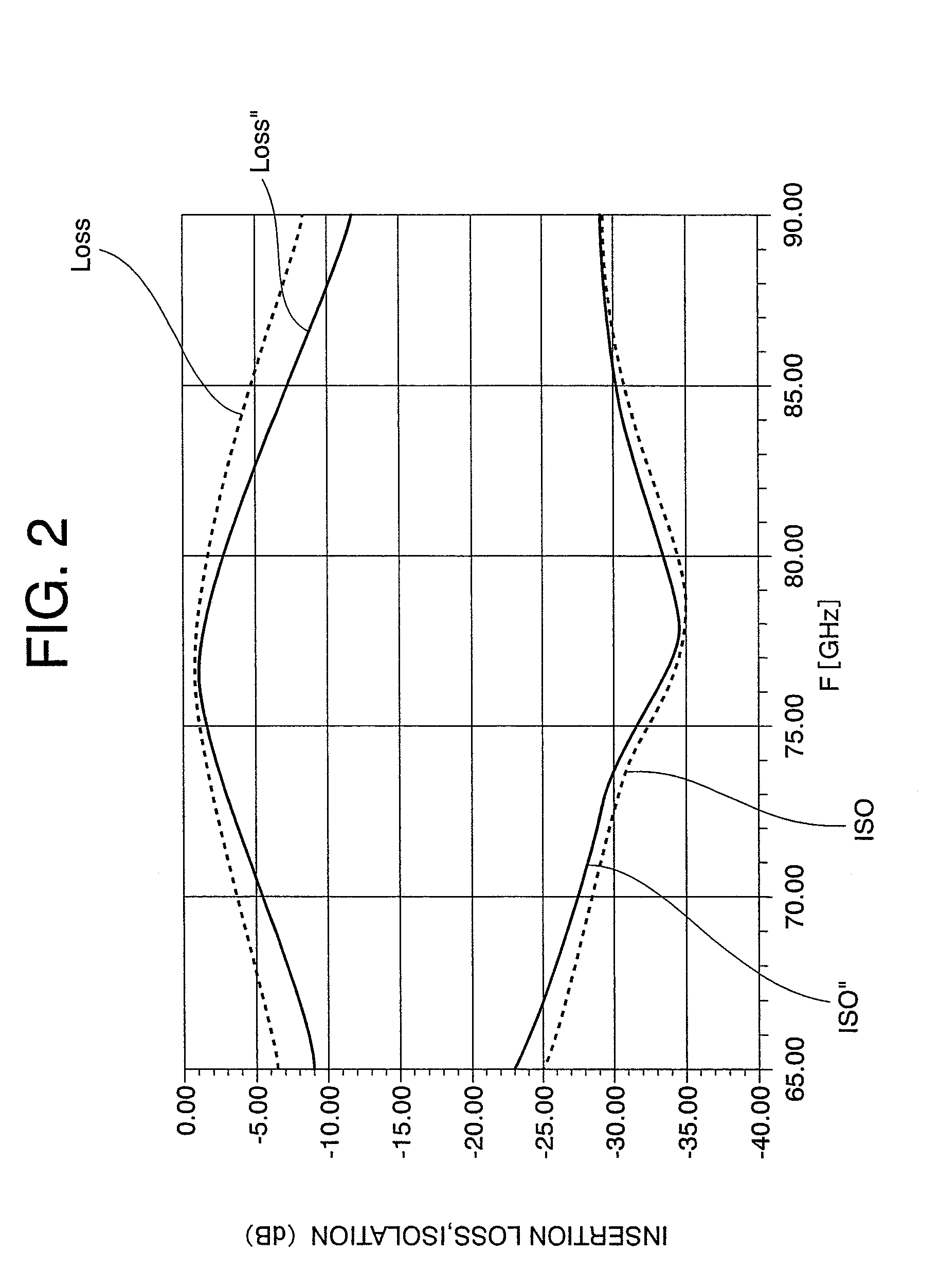Millimeter-band switching circuit
a switching circuit and millimeter-band technology, applied in the field of millimeter-band switching circuits, can solve the problems of affecting the insertion loss of the capacitor cb, affecting the insertion loss of the switching element, and affecting the insertion characteristic, so as to achieve the effect of easy correction of the varied off capacitance of the switching elemen
- Summary
- Abstract
- Description
- Claims
- Application Information
AI Technical Summary
Benefits of technology
Problems solved by technology
Method used
Image
Examples
embodiment 1
[0030]A millimeter-band SPST switching circuit according to Embodiment 1 of the present invention will be described with reference to FIGS. 1 and 2. FIG. 1 is an equivalent circuit diagram showing a structure of the millimeter-band SPST switching circuit according to Embodiment 1 of the present invention. Hereinafter, in each of the drawings, the same reference symbols indicate the same or corresponding portions.
[0031]The millimeter-band SPST switching circuit according to Embodiment 1 of the present invention as shown in FIG. 1 includes a transmission line (first transmission line) L2 connected with a signal input and output terminal P1, a transmission line (second transmission line) L2 connected with a signal input and output terminal P2, a coupling line L1 which is connected between the two transmission lines L2 and has a length L, a field effect transistor (FET) (first switching element) T whose gate is connected with a control voltage application terminal V1 through a bias resi...
embodiment 2
[0039]A millimeter-band SPDT switching circuit according to Embodiment 2 of the present invention will be described with reference to FIG. 3. FIG. 3 is an equivalent circuit diagram showing a structure of the millimeter-band SPDT switching circuit according to Embodiment 2 of the present invention.
[0040]The millimeter-band SPDT switching circuit according to Embodiment 2 of the present invention as shown in FIG. 3 includes a transmission line (first transmission line) L5 connected between a signal input and output terminal (first input and output terminal) P0 and a branch point PP, the coupling line (first coupling line) L1 which has the length L and is located on the left side, the transmission line (second transmission line) L2 connected with the signal input and output terminal (second input and output terminal) P1, a transmission line (third transmission line) L3 which is connected with the branch point PP and located on the left side, the field effect transistor (FET) (first sw...
embodiment 3
[0047]A millimeter-band switching circuit according to Embodiment 3 of the present invention will be described with reference to FIG. 4. FIG. 4 is an equivalent circuit diagram showing a structure of the millimeter-band switching circuit according to Embodiment 3 of the present invention.
[0048]The millimeter-band switching circuit according to Embodiment 3 of the present invention as shown in FIG. 4 includes the transmission line L5 connected between the signal input and output terminal P0 and the branch point PP, the first coupling line L1 having the length L, the transmission line L2 connected with the signal input and output terminal P1, the first transmission line L3 connected with the branch point PP, the field effect transistor (FET) T whose gate is connected with the control voltage application terminal V1 through the bias resistor R, whose drain is connected with the transmission line L2 and the coupling line L1, and whose source is grounded, and the field effect transistor ...
PUM
 Login to View More
Login to View More Abstract
Description
Claims
Application Information
 Login to View More
Login to View More - R&D
- Intellectual Property
- Life Sciences
- Materials
- Tech Scout
- Unparalleled Data Quality
- Higher Quality Content
- 60% Fewer Hallucinations
Browse by: Latest US Patents, China's latest patents, Technical Efficacy Thesaurus, Application Domain, Technology Topic, Popular Technical Reports.
© 2025 PatSnap. All rights reserved.Legal|Privacy policy|Modern Slavery Act Transparency Statement|Sitemap|About US| Contact US: help@patsnap.com



